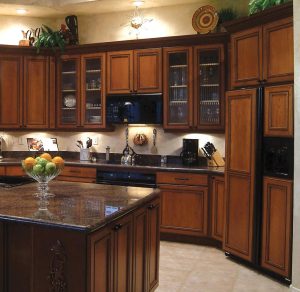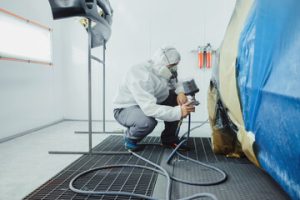Proper septic system maintenance extends the life of your drain field and reduces the risk of costly repairs or replacements. Ensure that your tank is pumped on a regular basis, and follow septic-friendly tips such as not flushing feminine hygiene products, paper towels, or cigarette butts.

Watch out for warning signs such as sewage odors, slow shower drains, and clogged toilets. By identifying these signs early, you can avoid more serious problems. Visit https://septic-guys.com/ to learn more.
A septic system is an on-site wastewater treatment and disposal method for homes and businesses that aren’t connected to public sewer systems. It’s important to hire a professional septic service to perform routine maintenance and to address any issues quickly to avoid costly damage, health risks, and repairs.
Regular septic tank pumping removes the buildup of solids, soap scum, and debris that can lead to blockages and other problems if left untreated. Pumping also helps to prevent sewage from backing up into your home. Look for signs that your septic tank is due for pumping, such as slow draining sinks and toilets, frequent clogs, or a smelly yard.
In addition to septic tank cleaning, a professional septic service can also perform other maintenance services like line and tank inspections, using cameras to identify any problems with your septic system. A septic tank inspector can also help you determine the right size septic tank for your home, ensuring that it’s large enough to handle the amount of wastewater produced by your family on a regular basis.
A septic tank service company can also replace the solids-handling and effluent pumps in your septic system, as well as any plumbing components located in the pump chamber. Floats are another critical component of your septic system. When one or more of these floats fails, they can cause your septic tank to overflow, which can lead to sewage backups and other serious complications.
Professional septic service providers can also repair or replace parts, such as septic tank baffles, lids, and lines, to ensure they’re working properly. They can also reseal your septic tank and repair cracks or holes in the liner. They can also install new filters to protect your well water and make sure the drain field is free from obstructions, root growth, or other problems that can impede the flow of waste into the drainfield.
While it may be tempting to try to tackle septic system installations or repairs on your own, DIY projects often lead to costly mistakes. Septic service technicians have the training and tools to do the job correctly the first time around, saving you money and headaches in the long run.
High-Quality Installation
A septic system is a great option for those without access to the public sewer system. It collects, treats, and contains wastewater to protect your property from sewage contamination. Professional septic service providers can install a new system on your property. This requires laying down pipes that move all household waste to an underground septic tank, which holds the sludge and scum. It also requires constructing a drain field that safely distributes wastewater into the soil for natural filtration.
A professional septic service provider will perform an initial site evaluation, soil testing, and zoning compliance to determine the best size and location for your septic tank and drain field. They will recommend the right system based on your family’s water usage and home layout. They will obtain all necessary permits and complete the entire installation process, including excavation, septic tank and drain field construction, and plumbing connections.
In addition to ensuring that the septic tank is properly installed, a professional septic service will provide ongoing maintenance and repairs for your system. These services can include inspections, cleaning, and clog removal. In addition, they can help you with your septic system budget by providing options for affordable septic pumping.
When selecting a septic service company, be sure to ask for unbiased references from past clients. You can also check with your local Better Business Bureau to learn if any complaints have been filed against the company. Choosing a qualified, experienced contractor will minimize your risk of costly repairs down the road.
Septic problems can arise for a variety of reasons. One common cause is a lack of maintenance. If the septic tank is not pumped regularly, solid waste will build up and clog the system. Other causes can include tree root intrusion and objects that are flushed down the toilet, such as sanitary wipes.
Regular septic system maintenance is essential to extending the life of your tank and preventing expensive problems down the road. It can also help you avoid contaminating groundwater or soil, which poses health risks for your family.
Preventative Maintenance
A well-maintained septic system is less likely to break down or malfunction, saving you money on emergency repairs and replacements. In fact, it can also help you avoid costly environmental damage and protect your family’s health.
Preventative maintenance services include regular septic tank pumping, cleaning and inspections, along with drainfield and piping evaluations. These routine services reduce the likelihood of unpleasant odors, sewage backups, and other expensive problems.
Septic tanks are constructed of concrete or steel, and the material is vulnerable to corrosion and rust over time. In addition, the tank itself may crack or leak over time. When this happens, groundwater can seep into the septic system and cause major problems. Regular inspections and preventative maintenance ensure that these issues are spotted early on, before they become worse.
During a septic tank service, crew members first locate and access the tank’s lid, which is often buried six to 12 inches under the surface of the ground. Once the crew has access, they pump out the septic tank, using a high-powered hose attached to a truck-mounted vacuum system. This process sucks up solid waste, liquid, and scum and pumps it into the truck’s holding tank. Once the tank is emptied, the crew cleans the interior of the tank and visually inspects the tank and its components to identify any issues that need attention.
If you own a commercial property, keeping up with preventative septic system maintenance is essential for your business’s health and safety. In addition to preventing costly and hazardous breakdowns, regular service helps ensure that your customers and employees are protected from dangerous pathogens and unpleasant smells.
Regulatory Compliance
Another benefit of regularly scheduled preventative septic system maintenance is ensuring that you remain in compliance with local regulations and ordinances. This includes reporting any septic tank or drainfield malfunctions to regulators and keeping detailed maintenance records. With these records, you’re more likely to pass septic tank inspections and avoid fines or other penalties for environmental violations.
Emergency Repairs
Whether your septic tank is leaking or your home plumbing is backing up with sewage, these are serious issues that must be addressed immediately to protect your health and property. You may be able to avoid these problems by having your septic system inspected on a regular basis and practicing good household habits, such as using the garbage disposal sparingly, not flushing any items other than human waste and toilet paper (including wipes that claim to be “flushable”), and keeping water use low.
Even with proper care, however, septic systems do not last forever, and even the best-maintained tanks and systems can require service from time to time. This is why septic service providers like us offer emergency septic services to assist with repairs and preventative maintenance for both residential and commercial properties.
Septic System Inspections
Having your septic system regularly inspected by an expert ensures that everything is functioning as it should and identifies any potential problems before they become major disasters. Our trained technicians thoroughly inspect each component of your septic system, looking for signs of clogs, disrepair, or other damage.
Septic Tank Pumping
Routine septic tank pumping removes excess sludge and solids, which can build up over time and reduce efficiency. We also clean your septic lines to keep them clear of debris and other blockages that can cause slow draining and backups.
Drain Field Issues
The drain field of your septic system is responsible for filtering wastewater into the soil. Problems with this system can lead to a variety of issues, including standing water in your yard or wastewater entering your house, and can be costly to repair.
Septic System Float Failures
Every septic tank has one or more floats that control various aspects of the tank’s operations. If these floats fail, it will cause the septic tank to overflow, and can also lead to overflows in your home’s plumbing. Fortunately, these floats are fairly easy to replace, and can be done so with minimal disruption to your home.
We can diagnose and repair a wide range of septic system issues, from faulty floats to complete tank replacements. Our professional team will work quickly and efficiently to restore your septic system and minimize the impact on your home and family.








